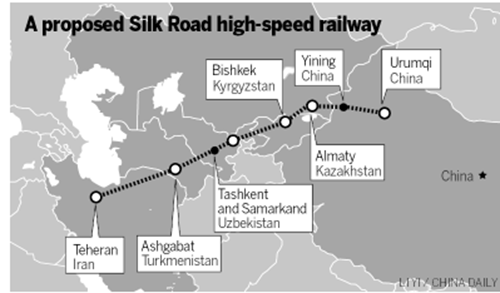According to Xinhua, China’s Inner Mongolia region will be connected to the Islamic Republic by utilizing preexisting rail routes through Kazakhstan and Turkmenistan, a concept that was proven before with test runs but will now officially enter into service.
It would be a stretch to describe this as a “game-changing” connectivity corridor when it’s only going to be used for sunflower seed exports for the time being, but it’s nevertheless a constructive development for deepening Chinese-Iranian economic relations following the US’ withdrawal from the nuclear deal last week.

Source China Daily, 21, November 2015
More products can be traded between the two Great Powers along this route in the future in providing a “pressure valve” to forthcoming American efforts to “contain” Iran, but more will have to be done in this direction if that’s to sustainably remain the case.
The full potential of this Chinese-Iranian rail route isn’t being exploited because it depends on older infrastructure that avoids some of Central Asia’s most populous and economically productive cities by hugging the peripheral borders of its Kazkh and Turkmen transit states.
Instead, what’s needed is for China to make progress on its reported plans from 2015 for pioneering a Central Asian high-speed rail route to Iran that passes through the centrally positioned and most populous regional country of Uzbekistan, which while trailing in comparison to its much geographically larger northern neighbor’s energy-driven economic success, has the most attractive real-sector economic value by virtue of its younger and numerically greater population.
No Chinese-Iranian rail corridor can therefore be strategically complete without including Uzbekistan, which is left out of the recently announced rail route.
*
Andrew Korybko is an American Moscow-based political analyst specializing in the relationship between the US strategy in Afro-Eurasia, China’s One Belt One Road global vision of New Silk Road connectivity, and Hybrid Warfare. He is a frequent contributor to Global Research.
The original source of this article is Oriental Review
The 21st Century
